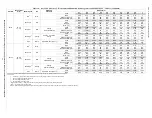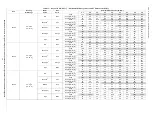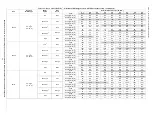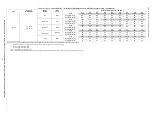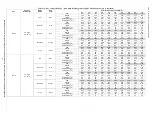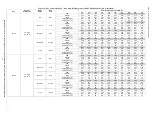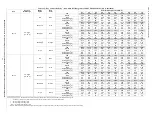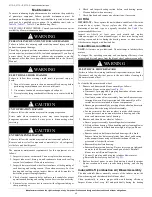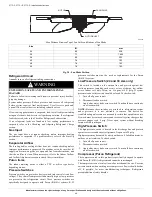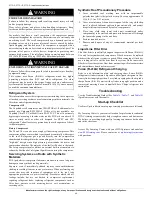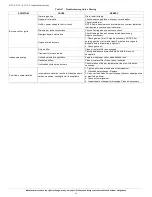
577C--C, 577C--E, 577C--F: Installation Instructions
Manufacturer reserves the right to change, at any time, specifications and designs without notice and without obligations.
48
A08505
Fig. 28 – Fan Blade Position
Refrigerant Circuit
Annually inspect all refrigerant tubing connections.
If low cooling performance is suspected, leak-test all refrigerant tubing
using an electronic leak-detector or liquid-soap solution. If a refrigerant
leak is detected, refer to the Check for Refrigerant Leaks section.
If no refrigerant leaks are found and low cooling performance is
suspected, refer to the Checking and Adjusting Refrigerant Charge
section.
Gas Input
The gas input does not require checking unless improper heating
performance is suspected. If a problem exists, refer to the Start-Up
section.
Evaporator Airflow
The heating and/or cooling airflow does not require checking unless
improper performance is suspected. If a problem exists, be sure that all
supply- and return-air grilles are open and free from obstructions, and
that the air filter is clean. When necessary, refer to the Indoor Airflow
and Airflow Adjustments section to check the system airflow.
Puron Items
The indoor metering device is either a TXV or orifice type device
depending on size.
Pressure Switches
Pressure switches are protective devices wired into control circuit (low
voltage). They shut off compressor if abnormally high or low pressures
are present in the refrigeration circuit. These pressure switches are
specifically designed to operate with Puron (R-410A) systems. R-22
pressure switches must not be used as replacements for the Puron
(R-410A) system.
Low Pressure Switch (24 and 30 size only)
This switch is located on the suction line and protects against low
suction pressures caused by such events as loss of charge, low airflow
across indoor coil, dirty filters, etc. It opens at 50
psig. If system
pressure is above this, switch should be closed. To check switch:
1. Turn off all power to unit.
2. Disconnect leads on switch.
3. Apply ohm meter leads across switch. You should have continuity
on a closed switch.
NOTE:
Because these switches are attached to refrigeration system
under pressure, it is not advisable to remove this device for
troubleshooting unless you are reasonably certain that a problem exists.
If switch must be removed, remove and recover all system charge so that
pressure gauges read 0 psig. Never open system without breaking
vacuum with dry nitrogen.
High-Pressure Switch
The high-pressure switch is located in the discharge line and protects
against excessive condenser coil pressure. It opens at 650 psig.
High pressure may be caused by a dirty outdoor coil, failed fan motor, or
outdoor air recirculation. To check switch:
1. Turn off all power to unit.
2. Disconnect leads on switch.
3. Apply ohm meter leads across switch. You should have continuity
on a closed switch.
Compressor (Puron Refrigerant)
The compressor used in this product is specifically designed to operate
with Puron (R-410A) refrigerant and cannot be interchanged.
The compressor is an electrical (as well as mechanical) device. Exercise
extreme caution when working near compressors. Power should be shut
off, if possible, for most troubleshooting techniques. Refrigerants
present additional safety hazards.
Max Distance Between Top of Fan Grille and Bottom of Fan Blade
Size
“A”
IN.
mm
24
9.0
228
30
7.1
1804
36
8.0
203
42
7.6
193
48
7.6
193
60
7.6
193
MOTOR
FAN GRILLE
MOTOR SHAFT
A
WARNING
!
EXPLOSION, SAFETY AND ENVIRONMENTAL
HAZARD
Failure to follow this warning could result in personal injury, death or
property damage.
System under pressure. Relieve pressure and recover all refrigerant
before system repair or final unit disposal. Use all service ports and
open all flow-control devices, including solenoid valves.

